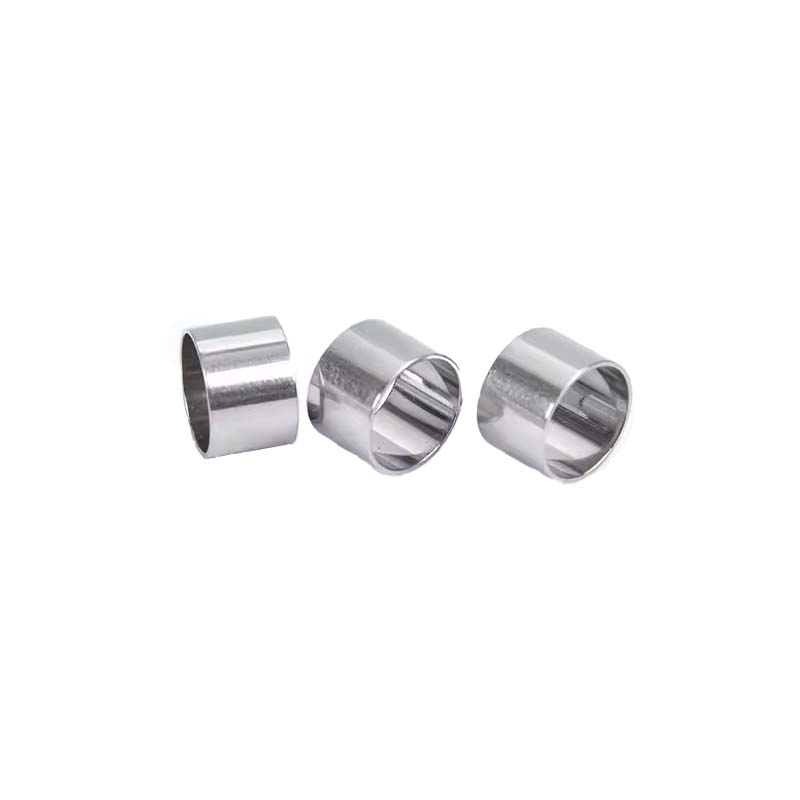Views: 0 Author: Site Editor Publish Time: 2025-08-07 Origin: Site








Stainless steel pipes exhibit significant differences in production processes due to variations in wall thickness. Although the production processes of thin-walled stainless steel pipes (typically referring to those with a wall thickness ≤ 3mm) and thick-walled stainless steel pipes (with a wall thickness > 3mm) share some similar steps, they have distinct focuses in key steps such as raw material selection, forming methods, and heat treatment processes. These differences directly affect the product performance and applicable scenarios.
The selection of raw materials for thin-walled and thick-walled stainless steel pipes first manifests in the emphasis on material grades. Thin-walled pipes are mostly used in scenarios such as fluid transportation and decoration, which have higher requirements for material ductility. They often use austenitic stainless steels like 304 and 304L. These materials have moderate nickel and chromium contents and excellent cold working performance, which can meet the stretching requirements during thin-walled forming. For example, thin-walled pipes used for drinking water pipes need to ensure the corrosion resistance and hygiene of the material, and the stability of the passive film of 304 stainless steel can effectively resist water erosion.
Thick-walled pipes, on the other hand, pay more attention to strength and pressure resistance, and widely adopt high-strength materials such as 316L and 2205 duplex steel. In high-pressure pipelines or structural support fields, thick-walled pipes need to withstand greater internal and external pressures. 316L has stronger intergranular corrosion resistance due to its molybdenum content, while 2205 duplex steel has a yield strength more than twice that of austenitic stainless steel, making it suitable for scenarios such as deep-sea engineering and chemical high-pressure pipelines. In addition, the raw material steel plates for thick-walled pipes have a larger thickness, usually hot-rolled steel plates with a thickness of 8 - 50mm, while thin-walled pipes mostly use cold-rolled steel strips with a thickness of 0.5 - 3mm to ensure the dimensional accuracy after forming.

In the forming process, the process routes of thin-walled and thick-walled stainless steel pipes are significantly different. Thin-walled pipes are mainly formed by cold working, with common processes such as "cold rolling - welding" or "cold drawing". During cold rolling forming, the steel strip is continuously rolled by multiple sets of rolls and gradually curled into a tubular shape. During this process, it is necessary to strictly control the roll pressure and speed to avoid wrinkles or cracks caused by excessively thin walls. The welding process mostly uses laser welding or high-frequency induction welding. The heat-affected zone of laser welding is only 0.1 - 0.3mm, which can reduce the deformation of thin-walled pipes after welding and ensure the flatness of the weld. Some high-precision thin-walled pipes will further refine the dimensions through cold drawing process. Through die stretching, the deviation of pipe diameter and wall thickness can be controlled within ± 0.05mm.
Thick-walled pipes are mainly formed by hot rolling, especially suitable for the production of large-diameter thick-walled pipes. The hot rolling process involves heating the billet to a high temperature (usually 1050 - 1200℃) and using the huge pressure of the rolling mill to roll the billet into a tubular shape. During this process, the metal has good fluidity and can form a thicker pipe wall in one pass. For thick-walled pipes with higher requirements, the "hot extrusion" process is also used. The heated billet is extruded into a pipe through a die, which can eliminate defects such as internal pores and improve structural compactness. When welding thick-walled pipes, submerged arc welding or argon-electric combined welding is mostly used. The weld needs to be filled with more welding wire, and after welding, the weld bead needs to be ground and inspected to ensure that the weld strength matches the base metal.
Heat treatment is a key step to eliminate forming stress and optimize performance, and the process parameters of the two are significantly different. Thin-walled pipes are prone to work hardening during cold working and need to restore toughness through bright annealing. The annealing temperature is usually controlled at 1050 - 1100℃, and a continuous annealing furnace is used, with nitrogen protection to prevent oxidation. The holding time is only 3 - 5 minutes. Rapid cooling can avoid grain coarsening, ensure the flexibility of the pipe, and facilitate subsequent processing such as bending and cutting.
The heat treatment of thick-walled pipes focuses more on eliminating internal stress generated by hot rolling or welding, and integral quenching and tempering is often used. For thick-walled pipes with high alloy content, they are heated to 900 - 1000℃ and held for 1 - 2 hours (adjusted according to wall thickness), then slowly cooled to reduce stress concentration. If used in low-temperature environments, low-temperature impact toughness treatment is also required. By controlling the cooling rate, the steel can obtain a uniform tempered sorbite structure, ensuring sufficient impact resistance at - 40℃. In addition, the weld area of thick-walled pipes needs to be subjected to local annealing separately to avoid embrittlement in the welding heat-affected zone.

In the surface treatment process, thin-walled pipes, which are mostly used in exposed scenarios or fluid transportation, have higher requirements for finish. In addition to the conventional pickling and passivation to remove oxide scale, electrolytic polishing is also performed to make the surface roughness Ra ≤ 0.8μm, reducing fluid resistance or enhancing decorative effect. For example, thin-walled pipes used in medical devices need to reach a mirror finish to avoid bacterial growth.
In summary, the production differences between thin-walled and thick-walled stainless steel pipes stem from different performance requirements. Each step of the process from raw materials to finished products is specifically adapted to their application scenarios, which also determines their irreplaceable positions in their respective fields.